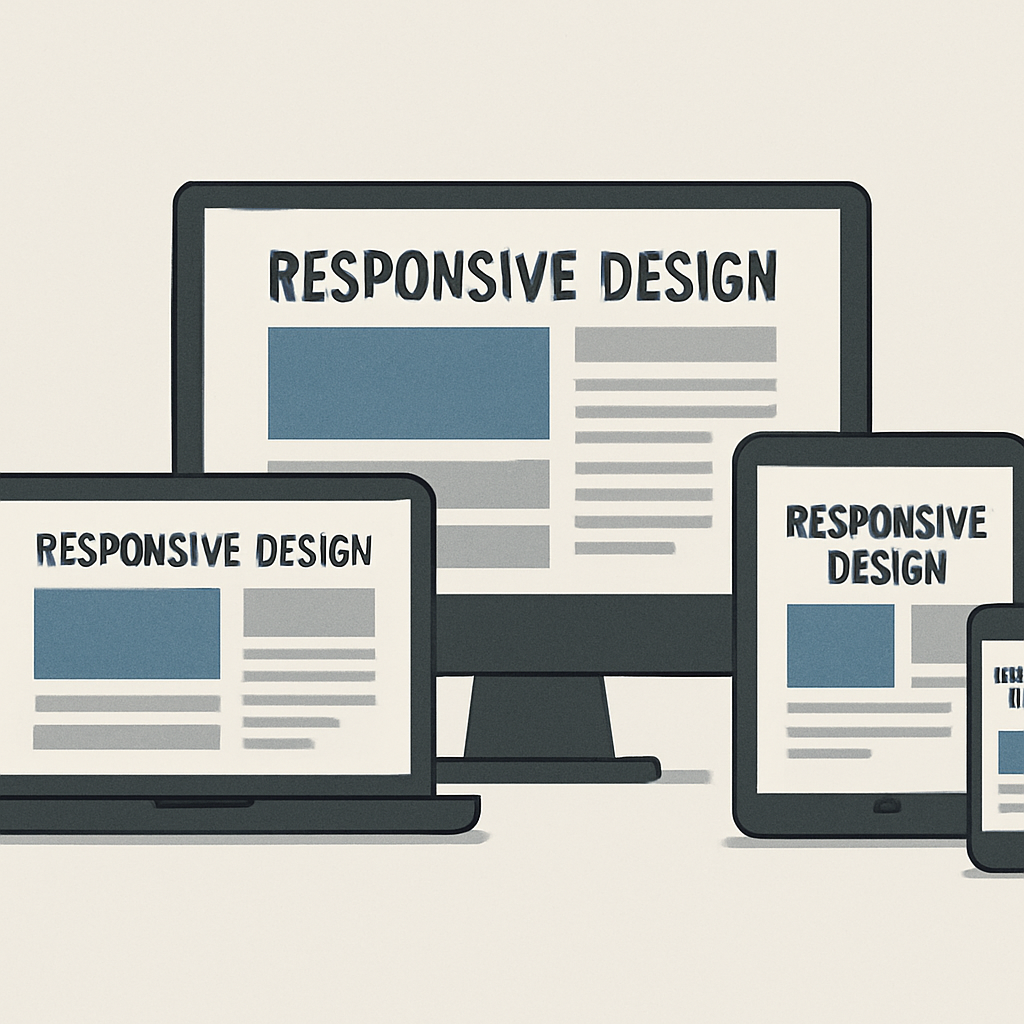Business Website Design: Key Features for Success
Discover the essential features for a successful website for business. Learn about design, SEO, and content strategies to enhance your online presence.
Essential Features for a Business Website
A user-friendly design is the foundation of a successful business website. It needs to be visually appealing and easy to navigate. The design should cater to the preferences and behaviors of your audience, making their experience seamless and enjoyable. Here are some key aspects to consider:
Clear Navigation
Your website's navigation should be intuitive, offering a straightforward path for users to follow. Visitors should easily find what they're looking for without getting lost in a maze of links. A well-structured menu and clear headings can guide users through your site effortlessly. Consider using a breadcrumb trail to help users keep track of their location within the site, enhancing their ability to backtrack or explore other sections without confusion.
Consistent Layout and Design
Consistency in layout and design elements across your website fosters familiarity and trust. Use uniform color schemes, fonts, and button styles to create a cohesive look. This consistency helps users predict where to find information, reducing cognitive load and enhancing their overall experience. Remember, a visually cluttered website can overwhelm visitors, so maintain a clean and organized design.
Mobile Responsiveness
In today's world, many people browse the internet on their smartphones or tablets. Ensuring your website is mobile-responsive means it will look and function well on any device. This can enhance the user experience and keep visitors engaged. Implement a responsive design that automatically adjusts elements to fit different screen sizes. Test your site on various devices to ensure compatibility and usability, and consider employing mobile-first design principles, which prioritize mobile user experiences in the design process.
Quality Content
Content is king when it comes to a business website. It should not only inform but also engage and persuade visitors to take action. Your content serves as a bridge connecting your business to your audience, conveying your brand's essence and driving conversions.
Compelling Homepage
Your homepage is often the first impression visitors have of your business. Make it count by clearly conveying your brand message and value proposition. Use engaging headlines and visuals to capture attention. Incorporate storytelling elements to emotionally connect with your audience. Additionally, highlight key services or products right on the homepage to immediately showcase what you offer, and use testimonials or reviews to build credibility and trust.
About Us Page
The "About Us" page is where you tell your brand story. Share your company's mission, values, and history. This helps build trust and connect with your audience on a personal level. Include profiles of key team members to humanize your brand and show the people behind the business. Use this page to also share any awards or recognitions your company has received, which can further bolster your credibility.
Product or Service Descriptions
If you sell products or services, provide detailed descriptions for each. Use clear, concise language to explain what you offer and how it benefits your customers. High-quality images or videos can also enhance product descriptions. Consider adding customer reviews or ratings for each product to provide social proof. For complex products, include downloadable guides or spec sheets to offer additional information to potential buyers.
Blogging or News Section
A blog or news section can position your company as a thought leader in your industry. Regularly update this section with relevant articles, tips, and news to engage your audience and improve SEO. Use this platform to address common customer questions or concerns, and consider incorporating guest posts from industry experts to provide diverse perspectives.
Strong Call-to-Actions
Every business website should include strong call-to-action (CTA) elements. These guide visitors toward taking specific actions, such as making a purchase or contacting your company. CTAs are crucial in converting passive visitors into active customers.
Placement and Design
CTAs should be strategically placed throughout your website. Use contrasting colors and bold fonts to make them stand out. Additionally, use action-oriented language like "Get Started," "Learn More," or "Contact Us." Place CTAs in prominent areas such as the top of the page, within content, and at the end of articles or product descriptions to maximize visibility. Experiment with different designs and placements to see what resonates best with your audience.
Lead Generation Forms
Include lead generation forms to capture visitor information. This can be used for building an email list or nurturing potential leads. Keep forms simple and ask for only essential information. Consider using a two-step form process, where you first capture the email and then ask for additional details, to increase conversion rates. Offer incentives, such as discounts or free resources, to encourage visitors to provide their information.
Social Proof CTAs
Incorporate social proof elements alongside your CTAs to increase their effectiveness. Display customer testimonials, user counts, or case studies near CTAs to reassure potential customers of the value and reliability of your offerings. Highlight any partnerships or collaborations with well-known brands to further enhance credibility.
Search Engine Optimization (SEO)
SEO is essential for ensuring your website ranks well in search engine results. This increases visibility and drives organic traffic to your site. A well-optimized site not only attracts more visitors but also enhances their overall experience.
Keyword Optimization
Research relevant keywords for your industry and incorporate them naturally into your website's content. This includes titles, headings, and meta descriptions. However, avoid keyword stuffing, as it can negatively impact your ranking. Use long-tail keywords to target specific audience segments and increase your chances of ranking for niche searches. Regularly update your keyword strategy based on performance metrics and industry trends.
Quality Backlinks
Building quality backlinks from reputable websites can boost your site's authority and credibility. Reach out to industry influencers or write guest posts to earn valuable backlinks. Engage in collaborative content projects with other brands to expand your reach and link-building opportunities. Monitor your backlink profile to ensure the links are from credible sources and remove any harmful or low-quality links.
Technical SEO
Ensure your website's technical elements, such as site architecture, XML sitemaps, and robot.txt files, are optimized for search engines. Conduct regular audits to identify and fix any technical issues that could hinder your site's performance. Implement structured data markup to help search engines understand your content better and enhance your site's visibility in search results.
Fast Loading Speed
In today's fast-paced world, users expect websites to load quickly. A slow-loading site can frustrate visitors and lead to higher bounce rates. Fast loading speeds not only improve user experience but also positively impact SEO rankings.
Image Optimization
Large image files can slow down your website. Optimize images by compressing them without sacrificing quality. This will improve loading times and enhance the user experience. Use responsive image techniques to deliver appropriate image sizes based on the user's device, and implement lazy loading to ensure images are loaded only when they enter the viewport.
Efficient Hosting
Choose a reliable hosting provider that offers fast server response times. A good hosting service can significantly impact your website's speed and performance. Consider using a content delivery network (CDN) to distribute your content across multiple servers globally, reducing load times for international visitors. Regularly monitor your site's speed using tools like Google PageSpeed Insights and make necessary adjustments.
Minification and Caching
Minify CSS, JavaScript, and HTML files to reduce their size and improve load times. Implement browser caching to store frequently accessed files on users' devices, minimizing the need for repeated downloads. Use server-side caching to create static versions of your pages, further enhancing speed and reducing server load.
Security Measures
Website security is crucial to protect your business and your customers' data. Implementing strong security measures can prevent cyberattacks and build trust with your audience. A secure site safeguards your reputation and ensures compliance with data protection regulations.
SSL Certificate
An SSL certificate encrypts data transmitted between your website and users' browsers. This is essential for any website, especially if you collect sensitive information like credit card details. Display security badges or seals on your site to reassure visitors of its safety. Regularly renew your SSL certificate to ensure ongoing protection.
Regular Updates and Backups
Keep your website's software, plugins, and themes up to date to fix vulnerabilities. Regularly back up your site to ensure you can restore it in case of a security breach. Use automated backup solutions to streamline the process and store backups in multiple locations for added security.
Security Monitoring and Protection
Implement security measures such as firewalls, malware scanning, and intrusion detection systems to protect your site from attacks. Monitor your site for suspicious activities and set up alerts for potential threats. Educate your team on security best practices to reduce human error risks and enhance overall security posture.
Contact Information
Make it easy for visitors to get in touch with you. Display your contact information prominently on your website. Clear communication channels facilitate customer interaction and support, enhancing their overall experience with your brand.
Contact Page
Create a dedicated contact page with your phone number, email address, and physical address if applicable. Include a contact form for convenience. Provide multiple ways for users to reach you, such as live chat or a chatbot, to offer immediate assistance. Clearly state your business hours and expected response times to manage visitor expectations.
Social Media Links
Link your social media profiles to your website. This allows visitors to connect with you on different platforms and stay updated on your latest news and offers. Use social media icons that are easily recognizable and place them in accessible locations, such as the header or footer. Encourage visitors to follow or like your pages by highlighting the benefits of doing so, such as exclusive content or promotions.
Customer Support Resources
Provide additional customer support resources, such as FAQs, help centers, or support forums, to assist visitors with common queries. Offer downloadable resources or guides that address specific customer needs. Regularly update these resources to reflect changes in your offerings or industry developments.
Conclusion
A well-designed business website is an invaluable tool for attracting customers and growing your brand. By incorporating these essential features, you can create a website that not only looks great but also functions effectively to meet your business goals. A strategic approach to design, content, and functionality ensures your site serves its purpose and delivers a memorable user experience. Remember to keep your website updated and continuously improve it based on user feedback and analytics. This way, you'll ensure your online presence remains strong and competitive in the digital landscape. Regularly assess your site's performance and adapt to changing trends and technologies to maintain its relevance and effectiveness.









